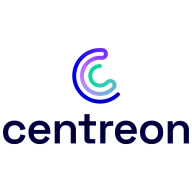

Centreon and Azure Monitor compete in the infrastructure monitoring solutions category. Azure Monitor seems to have the upper hand with its extensive cloud resource monitoring, customization, and integration options, making it ideal for cloud-based applications.
Features: Centreon is known for its scalability, advanced alerting capabilities, and flexible reporting features that allow detailed monitoring and customization. Its on-premises capabilities enable robust infrastructure visibility. Azure Monitor provides extensive cloud resource monitoring with high customization and integration options, particularly benefiting cloud applications and environments.
Room for Improvement: Centreon faces challenges like limited third-party integrations, complexity in its UI, and lack of cloud service monitoring. It also needs better API functionality and reporting customization. Azure Monitor requires improvements in user-friendliness and pricing transparency. It also needs enhanced AI-driven automation features and better integration with non-Microsoft cloud services for broader compatibility.
Ease of Deployment and Customer Service: Centreon typically deploys on-premises, supporting hybrid environments, whereas Azure Monitor is more suited to public cloud scenarios, offering strong integration with Azure services. Centreon's technical support has mixed reviews and limited service hours. Azure Monitor benefits from Microsoft's extensive support network but could expand its 24/7 support access for critical issues.
Pricing and ROI: Centreon is cost-effective as an open-source solution with no licensing fees but may incur costs in training and support, and its pricing increases with enterprise features. Azure Monitor uses a pay-as-you-go model that can initially be economical but may result in variable costs due to usage and log storage, complicating long-term budget planning. Both offer great investment value, with Centreon's model being straightforward for fixed assets and Azure's flexibility aligning well with cloud usage demands.
Azure Monitor helps prevent impacts on their system.
Centreon provides timesaving and costsaving benefits as it lets us manage multiple devices on a single platform.
It significantly saves time by automating monitoring tasks and reduces costs as it requires fewer resources.
Users end up getting no resolution from their team because they're outsourced vendors, and they don't have deeper expertise over any of the products they are referring to.
However, the second-line support is good.
I would rate the support for Azure Monitor as a seven.
We do not have direct access to Centreon's technical support.
If issues arise, like services appearing as down in Centreon, technical support helps check the polar-server communication.
Technical support from Centreon responds within 24 hours and resolves issues quickly.
Azure Monitor is very scalable; there are no issues with scalability for different kinds of businesses.
Occasionally, for several hours, we do not receive any alerts, causing a business impact.
We use other tools for adding and deploying configured devices, but direct access from Centreon would be beneficial.
Azure Monitor is working fine, yet I face a costing issue as if there are a lot of logs collected in the workspace or in the center, it becomes very costly.
Centreon is a much more straightforward and stable tool compared to Icinga.
Sometimes we do not receive alerts, causing business impact, and users ask why no alerts were received.
The cost skyrockets once you start using it, and there are complaints that the actual cost of the Kubernetes cluster was less than the cost they were incurring for Azure Monitor.
If Azure Monitor can independently add one gigabyte, two gigabytes, or five gigabytes at least to log storage, I can fix the logs without syncing with Log Analytics Workspace and Sentinel.
The challenges with Azure Monitor are that it's initially complex to set up because you need multiple components.
Enhancements are needed in identifying configuration issues, providing real-time alerts in case of issues, and improving the HTTP configuration tasks.
Reliability is sometimes an issue. Centreon has a developer mode and production mode, but sometimes alerts don't come through in production mode.
While Centreon excels at server-level monitoring, it lacks the ability to track web app availability and latency, unlike Dynatrace, which is efficient in this area.
When I export logs into the application, workspace, log analytic workspace, and into Sentinel to read reports, I need to add storage, which increases the cost.
Centreon's pricing is not very expensive.
The alerting features definitely help in reducing operational downtime for my customers by allowing us to get notifications in advance and take active actions.
The ease of access in Azure is significant because it's native to the platform and easy to integrate.
Resource monitoring is essential.
Monitoring is a fundamental pillar of technical support, and Centreon streamlines this process, reducing the need for extensive manual checks.
Centreon's real-time monitoring, despite having some manual aspects, supports us in managing our operations effectively.
Centreon allows us to monitor all of our devices on one platform.
| Product | Market Share (%) |
|---|---|
| Azure Monitor | 5.0% |
| Centreon | 3.2% |
| Other | 91.8% |


| Company Size | Count |
|---|---|
| Small Business | 23 |
| Midsize Enterprise | 6 |
| Large Enterprise | 29 |
| Company Size | Count |
|---|---|
| Small Business | 11 |
| Midsize Enterprise | 5 |
| Large Enterprise | 14 |
Azure Monitor is a comprehensive monitoring solution offered by Microsoft Azure. It provides a centralized platform for monitoring the performance and health of various Azure resources, applications, and infrastructure.
With Azure Monitor, users can gain insights into the availability, performance, and usage of their applications and infrastructure. The key features of Azure Monitor include metrics, logs, alerts, and dashboards. Metrics allow users to collect and analyze performance data from various Azure resources, such as virtual machines, databases, and storage accounts.
Logs enable users to collect and analyze log data from different sources, including Azure resources, applications, and operating systems. Azure Monitor also provides a robust alerting mechanism that allows users to set up alerts based on specific conditions or thresholds. These alerts can be configured to notify users via email, SMS, or other notification channels. Additionally, Azure Monitor offers customizable dashboards that allow users to visualize and analyze their monitoring data in a personalized and intuitive manner.
Azure Monitor integrates seamlessly with other Azure services, such as Azure Automation and Azure Logic Apps, enabling users to automate actions based on monitoring data. It also supports integration with third-party monitoring tools and services, providing flexibility and extensibility.
Overall, Azure Monitor is a powerful and versatile monitoring solution that helps users gain deep insights into the performance and health of their Azure resources and applications. It offers a wide range of features and integrations, making it a comprehensive solution for monitoring and managing Azure environments.
Centreon is an all-in-one IT monitoring solution that is a network, system, applicative supervision, and monitoring tool. It is free and open source, and one of the most flexible and powerful monitoring softwares on the market.
Centreon Features
Centreon has many valuable key features. Some of the most useful ones include:
Centreon Benefits
There are several benefits to implementing Centreon. Some of the biggest advantages the solution offers include:
Reviews from Real Users
Below are some reviews and helpful feedback written by Centreon users.
PeerSpot user Thor M., CEO at a tech services company, says, "The single-pane view provides us a view of all of our network infrastructure, and it is one of the most important tools that we use to see the status of our customers' networks. It provides a nice benefit when it comes to helping align IT operations with business objectives. The top-down views, dashboards, and business context reporting are things that are nice to have because you want to be able to show the customer that everything is working, that problems have been addressed, and that you're providing value.”
Thomas C., Managing Director, Canada at Eva, comments, “The most valuable feature of the solution is the flexibility, the ability to integrate all kinds of equipment. As long as something has an IP you can monitor it. What we try to achieve all the time is not only saying a company's system is available, but to give additional data on the performance of the equipment. So the flexibility is what matters the most to us, where we can script everything. Centreon has a lot of Plugin Packs, meaning they support, by design, a lot of devices. And on top of that, we have the ability to add our own scripts and do whatever we want and display the data as we want in the central dashboards.”
Marcilio L., President at ITS Solucoes, expresses, "The dashboards are valuable because they ease troubleshooting and viewing. It becomes easier to locate the source of a problem... The dashboards make it easier to communicate with our clients. They don't want to see the alert console, they want to see a beautiful dashboard representing their network and their business and to watch it in case something is wrong in their environment."
Florent Q., Network Engineer at a computer software company, mentions, "The most valuable feature is that we can manually configure everything we need. After it comes inside the interface of Centreon, you can display it. Because the interface is quite user-friendly, you can manually configure the configuration very deeply, which is very pleasant and useful because you can monitor and see everything on your service list, dashboard, or MAP. The most useful feature for me is that you can create your own plugin and monitoring query."
We monitor all Cloud Monitoring Software reviews to prevent fraudulent reviews and keep review quality high. We do not post reviews by company employees or direct competitors. We validate each review for authenticity via cross-reference with LinkedIn, and personal follow-up with the reviewer when necessary.